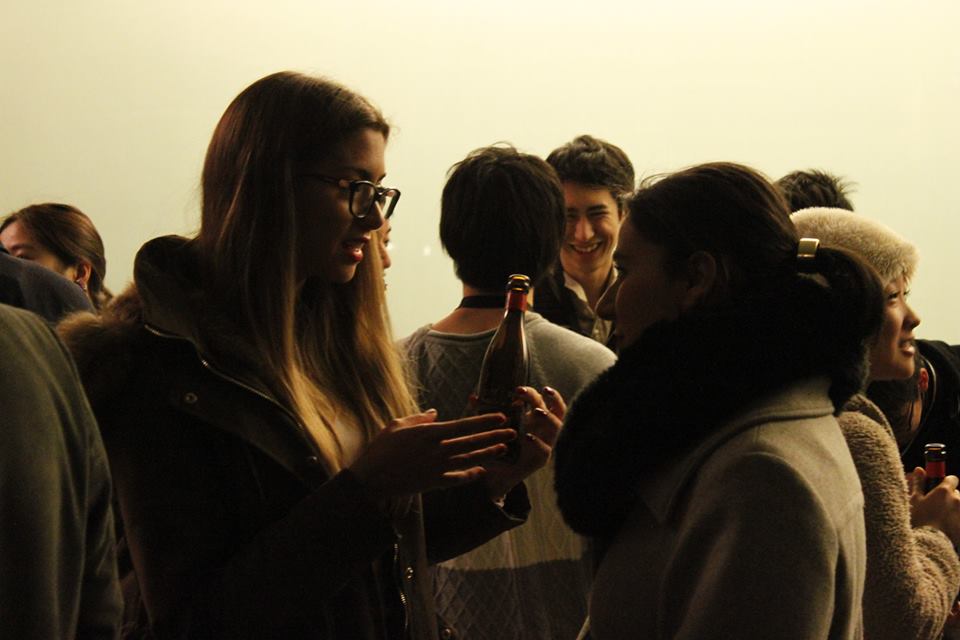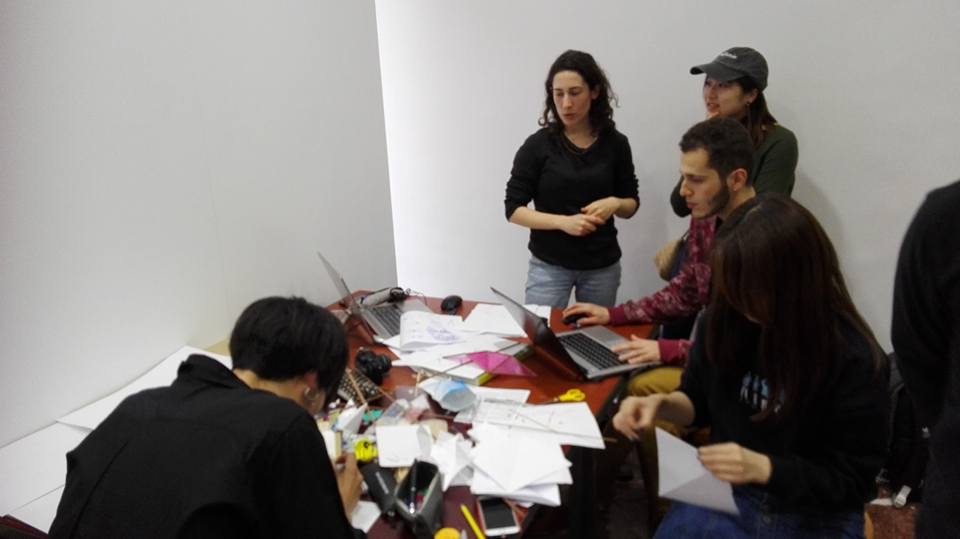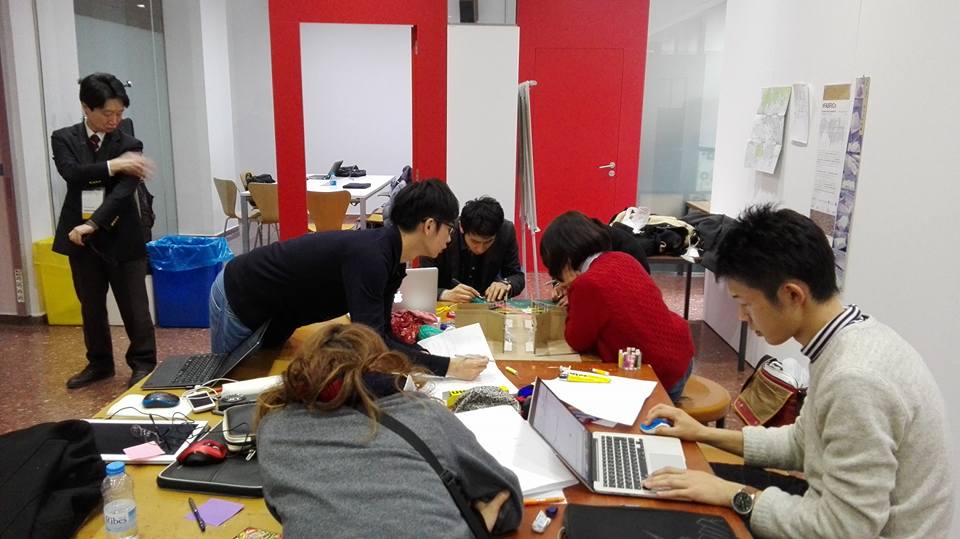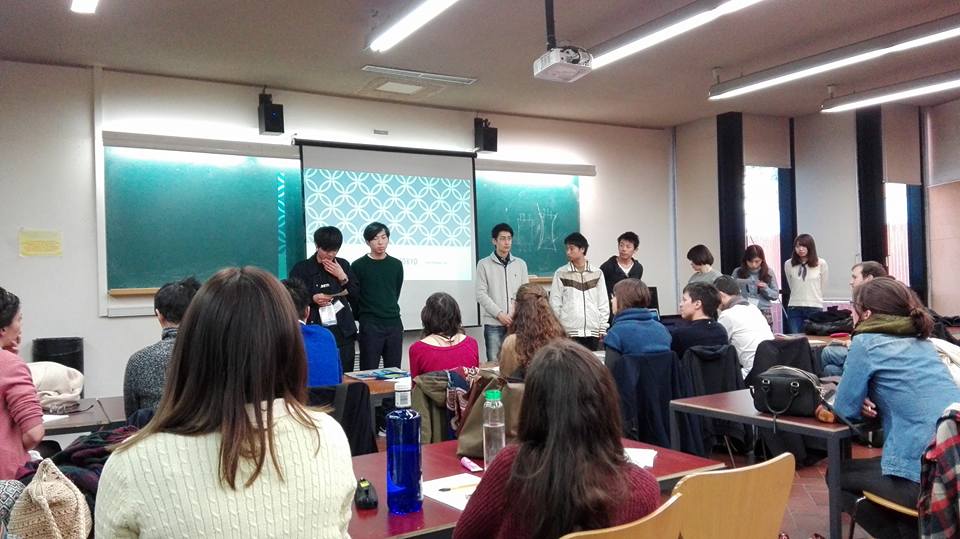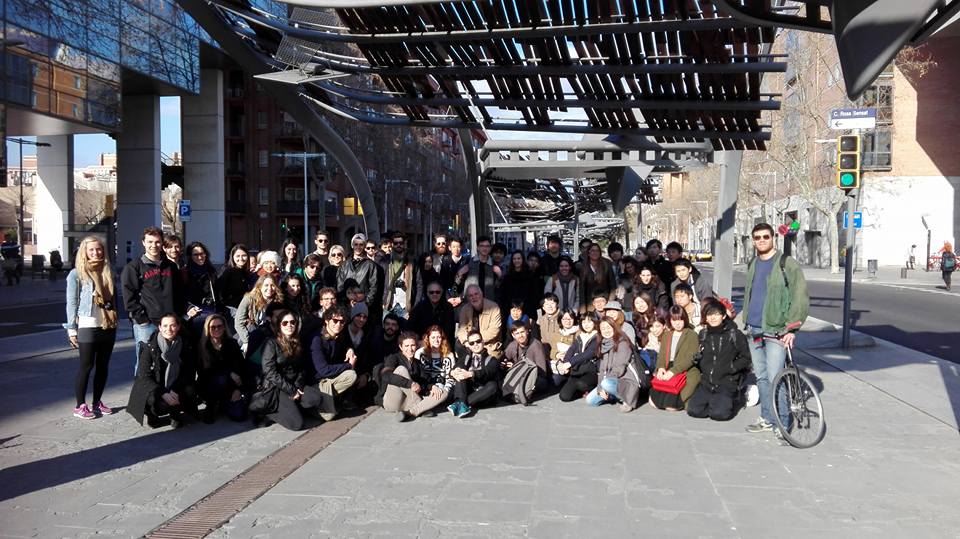The technique of weaving has always been used to create new realities; to transform linear matter into spatial bodies. Fabric can be textile and urban, both based on a regular structure, with a stitch type organizing the tissue.
Nonetheless, on one hand, it can be deformed to fit with the basis while, at the same time, the stitch can change in specific locations with the aim of adapting to particular situations.
Fabric is flexible and strong. Fabric can be layered to add complexity. Fabric can be modified and mended. From pieces, a new unique whole can be built. Let’s work with fabric!
The Keio University of Tokyo and the UPC University of Barcelona organize an International Architecture Workshop aiming at creating new bonds and expanding horizons in the field of university relations. Students from the Keio University of Tokyo will travel to Barcelona and will team with students from the UPC during a workshop in March 2016. The results of their work will be presented in the ASA International Design Competition 2016.
The production will be organized in a balanced system that will involve working in the field through city visits and atelier production in the UPC Architecture School. This cooperation has the intention of creating a new, regular connection between the Keio University and the School of Architecture of UPC Barcelona.
Barcelona, 05-10/03/2016
Prof/col
Masayuki Kohiyama · Darko Radovic · Davisi Boontharm · Helena Coch · Cristina Pardal · Estanislau Roca · Xavier Solsona · Miquel Martí · Jordi Carbonell · Inés Aquilué · Shizuka Wakayama · Wakataro Ueno · Glòria Serra · Jordi Oriol
When speaking about colonisation of territory we tend to think about the permanent. In our imaginary, the fabric of the city is always a set of constructions strong and solid. However, if we go backwards in history we will learn that many of our permanent tissues were based on the ephemeral. In the European context, we can speak about the Roman camps, which ended becoming cities, like the case of Barcelona, Barcino.
In many places, local cultures were nomad, mounting and dismounting their urban centres and adapting to seasons, hunting and climate. In earthquake regions, while the site was permanent, the architecture was thought to last until the next earth movement. Some temples of Japan are built next to a forest which is in charge of supplying the wood for its regular “reconstruction”.
Many items of the urban tissue also started with an ephemeral nature and ended up becoming a permanent structure. In this category, we can introduce the local markets that started occupying a vast space, which after was transformed into a square, on a posterior stage it was covered to protect it from rain and sun depending on the climate and, finally, it was constructed as a full building with a high urban entity. In this section, some of the interventions of the Universal Expositions could be added, as the Eiffel Tower or the Mies Van der Rohe Pavilion, both planned to be ephemeral but still existing as icons of their respective cities.
Pavilions might be one of the most defining structures of ephemeral nature. Tents of nomad cultures, the Serpentine Pavilion in Great Britain, stands for fairs… many examples can be found of humans building an ephemeral small structure to host activities.
While pavilions are a main character of the Mediterranean area because the climate allows a life in the semi-exterior, they are also central in Japanese culture, where there is a strong aesthetic value attributed to temporary phenomena or objects with characteristics such as lightness, instability and transience due to historic circumstances and cultural specificity.
The pavilion, understood as an architectonic form of ephemeral is, therefore, an item that brings together two highly different civilisations. However, in each place of the world the protection offered by a pavilion tends to change slightly, adapting to the environment and culture of the location. In Barcelona, like other many places where the radiation of the sun tends to be aggressive during some part of the year, the most simple pavilions focus on creating a shadow to protect the users from the sun, allowing them to develop the activities intended.
Consequently, the workshop asks the students to create a “space defined by a shadow”, contemplated for multiple areas but exemplified by a specific site in Barcelona, part of the route of “walking Barcelona” activity. This definition of the shadow can be achieved by a canopy, a parasol, a porch, sunscreen, umbrella, canvas, tent…as long as it fits to the chosen location. However, the common denominator of every proposal must be its materialisation with fabric, a textile material.
Fabric has always been a material strongly related with Catalan history and culture. During the industrialisation period, most of the Catalan areas focused their production on the textile sector, becoming a central sector in the industry scope.
On the other hand, the textile is also intimately connected with Japanese tradition. One clear example is the scarlet felt mat used at the time of cherry-blossom. The delimitation of the celebrative atmosphere and space are achieved by spreading a mat on the ground, where groups of people cluster transforming the textile item into a social condenser. Another clear example is the use of “furoshiki”, a square of cloth used for wrapping items instead of a bag. It is a traditional, but at the same time sustainable, of carrying multiple objects, such as a present box or wine bottle.
The exercise will be organized in groups mixing students from both universities, with the objective of enhancing international connections and offering the opportunity to learn new ways of working and new points of view in the field of architecture and urban projects.
Images of the workshop:

Welcome evening at Mies van der Rohe Pavilion

Welcome evening at Mies van der Rohe Pavilion

Welcome evening at Mies van der Rohe Pavilion
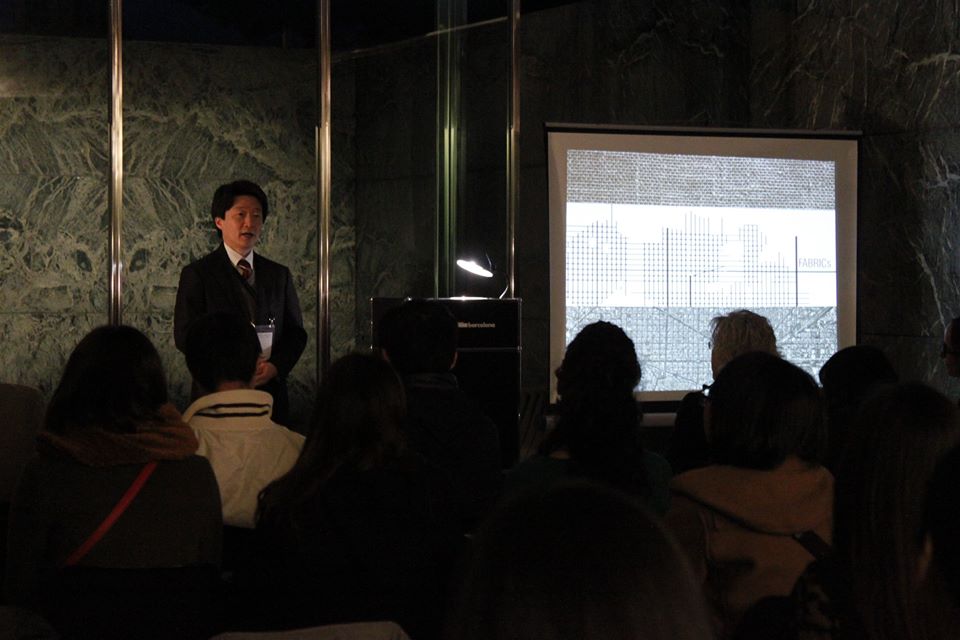
Welcome evening at Mies van der Rohe Pavilion

Welcome evening at Mies van der Rohe Pavilion
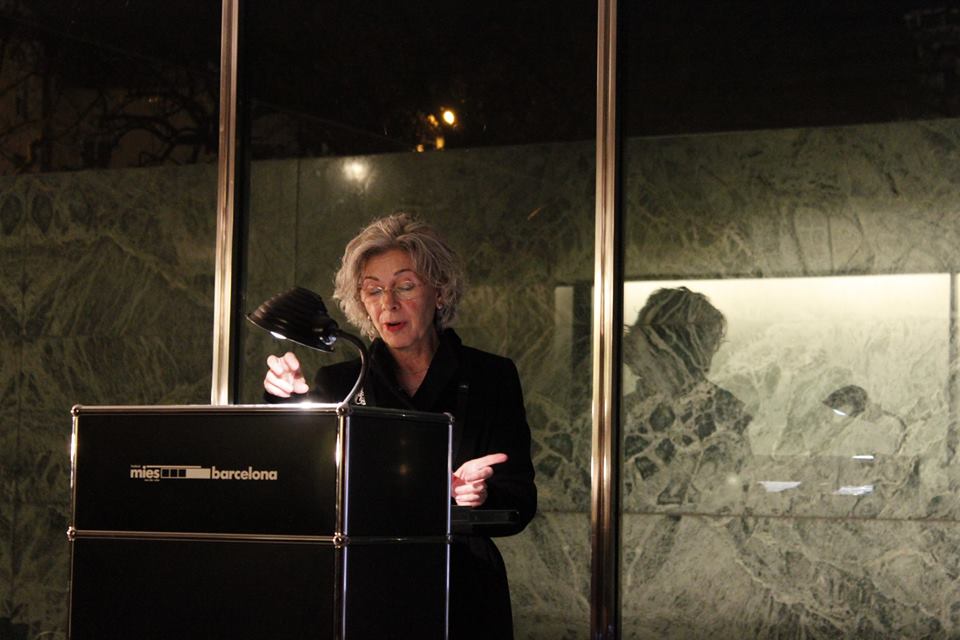
Welcome evening at Mies van der Rohe Pavilion
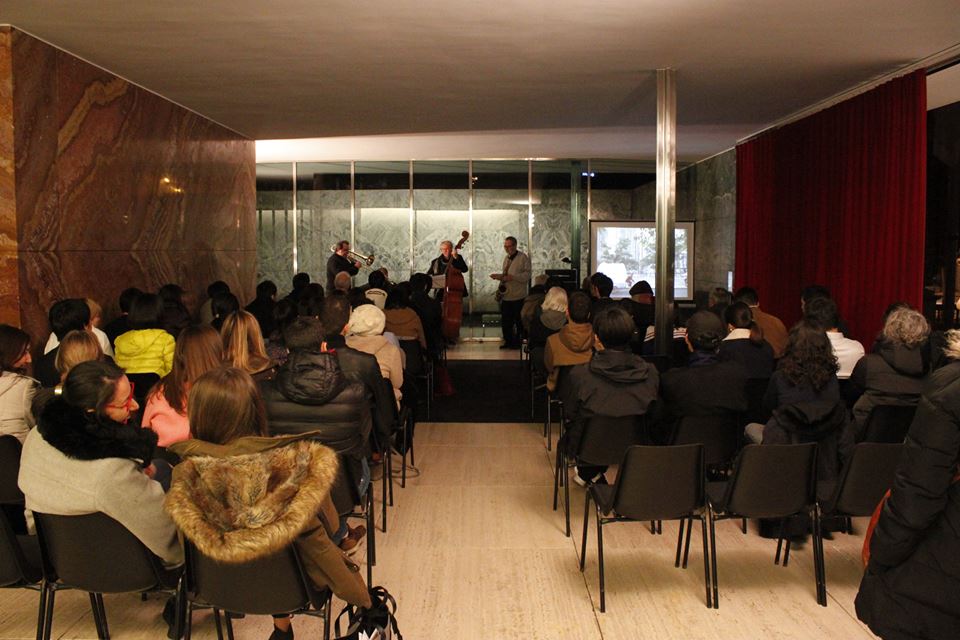
Welcome evening at Mies van der Rohe Pavilion
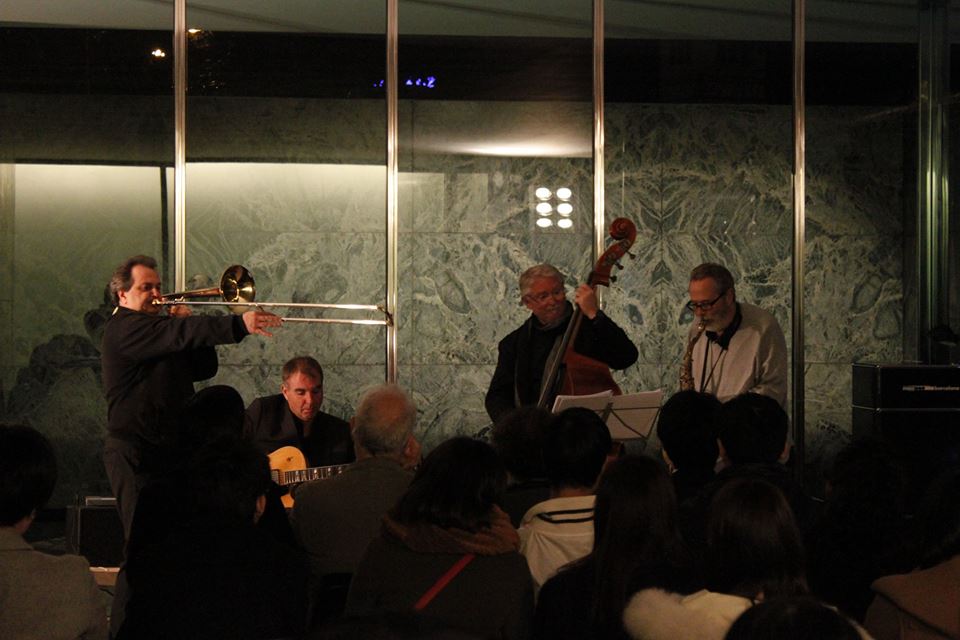
Welcome evening at Mies van der Rohe Pavilion

